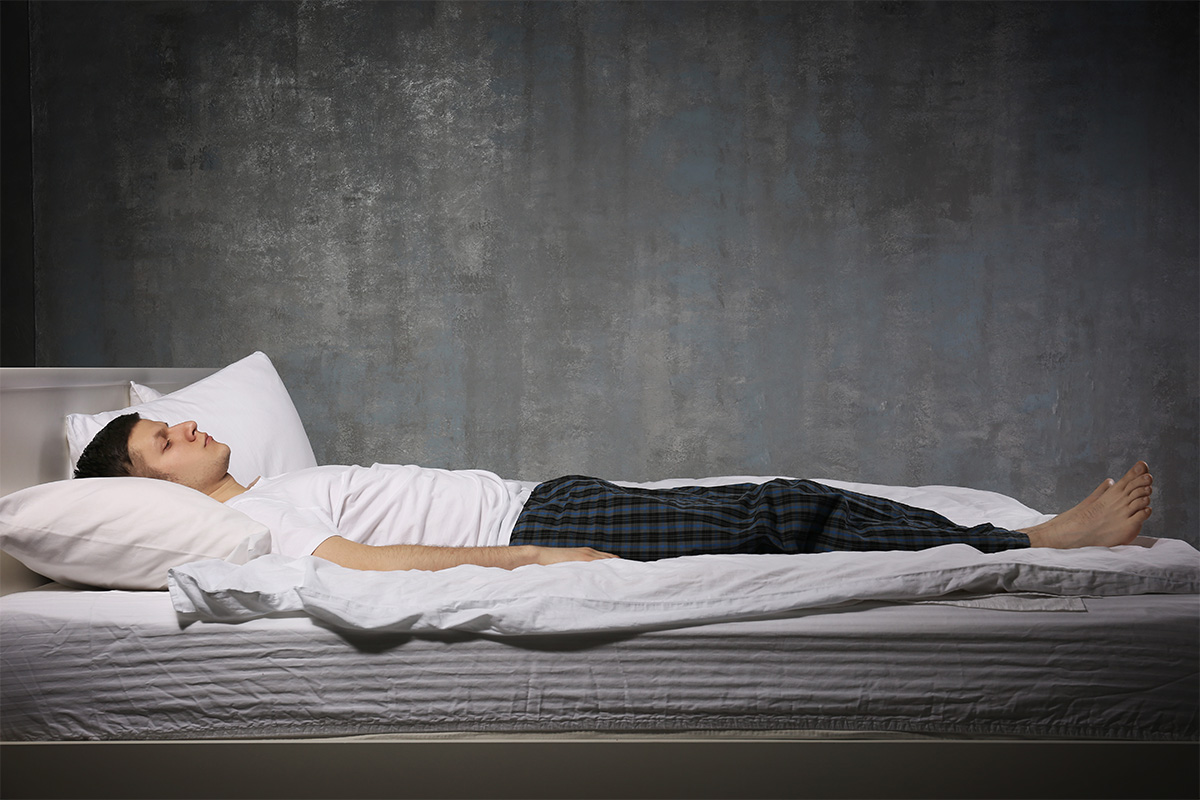
Are you acquainted with the “Night Hag”…? Also known as sleep paralysis.
It is described as a terrifying, malevolent supernatural presence that immobilises a person as they wake from sleep in the night, being either in the room, on the end of the bed, or even sitting on their chest.
Sounds crazy, yes?
It is a very real phenomenon, however, for people who suffer from sleep paralysis – and there is a scientific explanation for it.
Sleep Paralysis – What is It?
The Experience
A person suffering from sleep paralysis wakes up from what usually feels like a deep, dream-free sleep. Although they feel fully conscious, they can’t move the body or speak – and some may even feel unable to breathe. In the majority of cases, there is also an inexplicable feeling of pervading “evil” in the room. Lasting from just seconds to a few minutes, it can feel like an unending struggle trapped in one’s body before being able to move and speak. Overall, the experience can be extremely frightening.
Though people who experience sleep paralysis rarely talk about it, it is a phenomenon that has been described all over the world for many thousands of years. There is a lot of folklore derived from it, attributing it to a supernatural old hag, a demon, a djinn, a ghost, an evil witch, or the Devil himself. It is even depicted in the classic painting The Nightmare. This work by Swiss artist Henry Fuseli, completed in 1781, depicts a woman sleeping on her back with a demonic incubus sitting on her chest, while a horse watches from behind a dark curtain. This work captures the “nightmare” feelings of external evil and dread that accompany sleep paralysis.
Symptoms
-
- An inability to move or speak immediately after waking in the night
- A feeling of pressure on the chest or hallucinations of suffocation
- Hallucinations of a menacing presence in the room
- Out-of-body sensation
- Fear and/or panic
A Scientific Explanation for Sleep Paralysis
Sleep paralysis is a disruptive sleep disorder or parasomnia and 8% of people will experience at least one episode of it during their lifetime.
Closely linked with REM sleep, it is a temporary atonia or loss of muscle control that causes a very brief inability to move or speak. Occurring immediately after falling asleep or waking, it can last between a few seconds and a few minutes.
Scientists believe this phenomenon occurs as the consciousness boundary between the distinct states of sleep and being awake becomes blurred. The person experiencing sleep paralysis is conscious and aware but can’t move. Three-quarters of these episodes are accompanied by hallucinations (the lurking sense of evil).
How does this occur? As the REM sleep stage involves vivid dreaming, the body enters a state of atonia so that dreams are not physically acted out (if this fails, sleepwalking can occur). REM and atonia usually cease upon waking or transitioning to the next stage of sleep. With sleep paralysis, it seems that atonia and the mental imagery of REM sleep persist into the awakened state.
It is interesting to note that most people who experience episodes of sleep paralysis don’t feel like they were dreaming beforehand, Moreover, the hallucinations associated with sleep paralysis are very different from typical dreams. The universally menacing nature of these hallucinations has also not been scientifically explained.
Causes of Sleep Paralysis
Scientists don’t yet fully understand what causes sleep paralysis. They do theorise that it is the result of a mixed state of consciousness occurring due to sudden waking as the sleep cycle stages shift.
Links have been found between the condition and:
- Sleeping on one’s back
- Not getting enough sleep
- Psychological stress
- An erratic sleep schedule
It appears to be more common in people with:
- Insomnia
- Narcolepsy
- Vivid nightmares
- Lucid dreaming
- Psychological issues including panic disorder, post-traumatic stress disorder, and bipolar disorder
- Obstructive Sleep Apnoea
- Dissociative disorders (including dissociation, depersonalisation, derealisation)
- Certain medications (e.g., used for ADHD)
- Substance abuse
Sleep paralysis may also happen with no obvious attributable cause, and as a one-off or with recurrent episodes over weeks, months, years, or even decades. Most sufferers will begin having episodes either during childhood, adolescence, or young adulthood, with it being more common in the 20s and 30s.
It’s worth noting that sleep paralysis differs from night terrors (which arise from the very deep, slow-wave sleep that is achieved earlier in the night) and are much more common among children. A person having a night terror is very difficult to wake up. Most will have no recall of the night terror.
Is there a Link Between Sleep Paralysis and Snoring/Sleep Apnea?
Snoring may contribute to sleep paralysis, as it disrupts sleep. Obstructive sleep apnea certainly disrupts sleep – and there is a definite link between the two.
Sleep paralysis affects an average of 7% of the general population, but as many as 40% of people with obstructive sleep apnea also have episodes of sleep paralysis.
Not only is the proper management of sleep apnoea critical for health, well-being, and longevity, but it is also an important strategy to minimise or prevent sleep paralysis episodes from occurring.
Tips for Overcoming Sleep Paralysis
Do you suffer from sleep paralysis?
You’ll be relieved to know that sleep paralysis is not considered to be physically dangerous, and most episodes end either spontaneously or when you are touched. This doesn’t negate the psychological impact of recurrent episodes, which can result in bedtime sleep anxiety and, ultimately, sleep deprivation.
Some tips for dealing with this include:
- Make sure you get enough sleep.
- Establish a healthy, consistent sleep schedule
- Try not to sleep on your back
- Improve your sleep environment and make your bedroom an electronic device- and TV-free zone
- Reduce your intake of caffeine and alcohol
- Get adequate exercise
- Adopt relaxation practices before bedtime
- Avoid consuming disturbing content (horror, supernatural, and crime/thrillers if they bother you) on TV, gaming, and in reading materials, especially just before bedtime
- Address issues such as ongoing anxiety, stress, snoring, sleep apnoea, etc
- Cognitive behavioural therapy (CBT may help)
During an episode, try to focus on moving your hand, foot, or even just a finger – this may put an end to it. Know that you are perfectly safe and not experiencing a supernatural visitation! Understanding what is happening makes all the difference; relax into it rather than fighting it and you’ll eventually adapt so that you’ll very quickly go back to sleep.
ApneaRx: Sleep Soundly, Stop Snoring, & Improve Sleep Apnea
Improving the quality of your sleep and preventing snoring may help minimise or prevent sleep paralysis from occurring.
The answer is to use ApneaRx. This is an easy-to-use, comfortable, and safe solution to stop snoring and sleep more soundly. Incredibly effective, it can also be used with CPAP to help manage some symptoms associated with mild to moderate sleep apnea.
How does it work? ApneaRx is worn in the mouth during sleep and is micro-adjustable to slightly move the lower jaw forward, helping open the airways and prevent the main cause of snoring.
Explore our website now to know more or see our online catalogue for informative articles about sleep and snoring.


